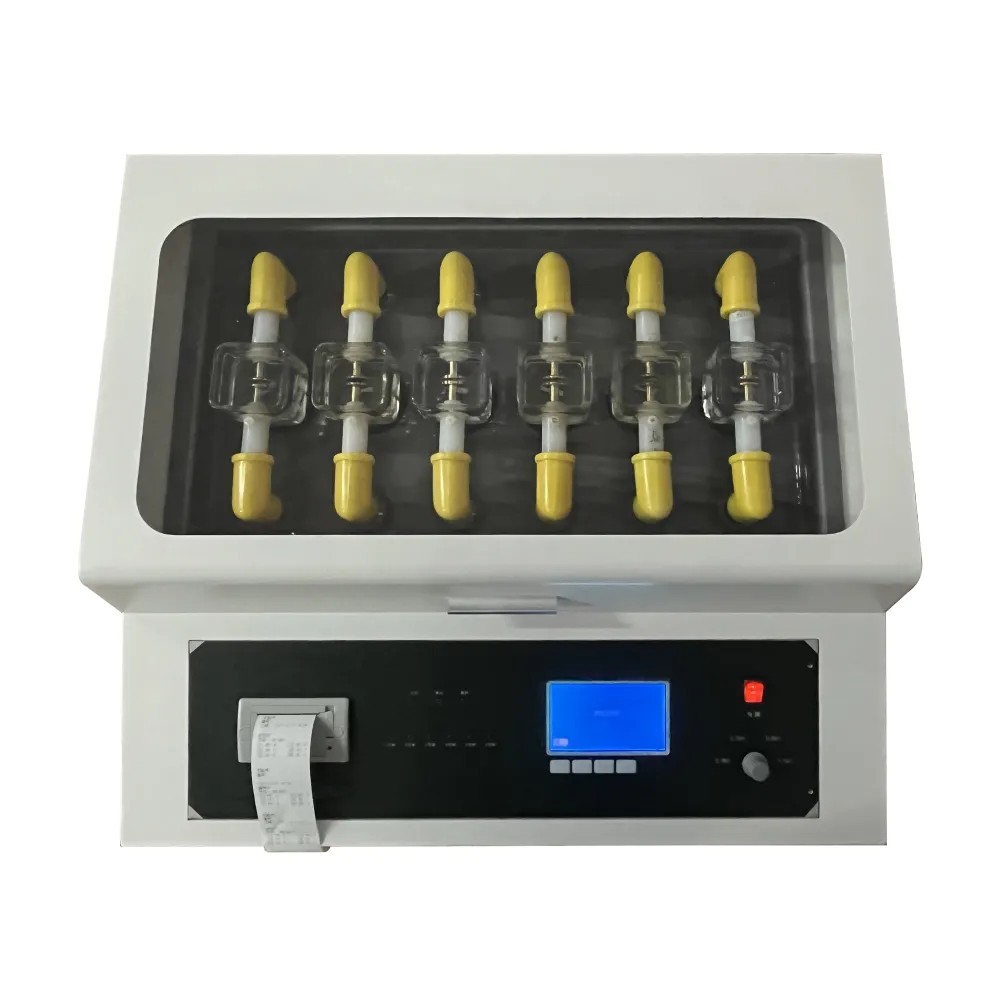TEL:
+86-0312-3189593
 English
English

Telephone:0312-3189593

Email:sales@oil-tester.com

-
 Afrikaans
Afrikaans -
 Albanian
Albanian -
 Amharic
Amharic -
 Arabic
Arabic -
 Armenian
Armenian -
 Azerbaijani
Azerbaijani -
 Basque
Basque -
 Belarusian
Belarusian -
 Bengali
Bengali -
 Bosnian
Bosnian -
 Bulgarian
Bulgarian -
 Catalan
Catalan -
 Cebuano
Cebuano -
 China
China -
 China (Taiwan)
China (Taiwan) -
 Corsican
Corsican -
 Croatian
Croatian -
 Czech
Czech -
 Danish
Danish -
 Dutch
Dutch -
 English
English -
 Esperanto
Esperanto -
 Estonian
Estonian -
 Finnish
Finnish -
 French
French -
 Frisian
Frisian -
 Galician
Galician -
 Georgian
Georgian -
 German
German -
 Greek
Greek -
 Gujarati
Gujarati -
 Haitian Creole
Haitian Creole -
 hausa
hausa -
 hawaiian
hawaiian -
 Hebrew
Hebrew -
 Hindi
Hindi -
 Miao
Miao -
 Hungarian
Hungarian -
 Icelandic
Icelandic -
 igbo
igbo -
 Indonesian
Indonesian -
 irish
irish -
 Italian
Italian -
 Japanese
Japanese -
 Javanese
Javanese -
 Kannada
Kannada -
 kazakh
kazakh -
 Khmer
Khmer -
 Rwandese
Rwandese -
 Korean
Korean -
 Kurdish
Kurdish -
 Kyrgyz
Kyrgyz -
 Lao
Lao -
 Latin
Latin -
 Latvian
Latvian -
 Lithuanian
Lithuanian -
 Luxembourgish
Luxembourgish -
 Macedonian
Macedonian -
 Malgashi
Malgashi -
 Malay
Malay -
 Malayalam
Malayalam -
 Maltese
Maltese -
 Maori
Maori -
 Marathi
Marathi -
 Mongolian
Mongolian -
 Myanmar
Myanmar -
 Nepali
Nepali -
 Norwegian
Norwegian -
 Norwegian
Norwegian -
 Occitan
Occitan -
 Pashto
Pashto -
 Persian
Persian -
 Polish
Polish -
 Portuguese
Portuguese -
 Punjabi
Punjabi -
 Romanian
Romanian -
 Russian
Russian -
 Samoan
Samoan -
 Scottish Gaelic
Scottish Gaelic -
 Serbian
Serbian -
 Sesotho
Sesotho -
 Shona
Shona -
 Sindhi
Sindhi -
 Sinhala
Sinhala -
 Slovak
Slovak -
 Slovenian
Slovenian -
 Somali
Somali -
 Spanish
Spanish -
 Sundanese
Sundanese -
 Swahili
Swahili -
 Swedish
Swedish -
 Tagalog
Tagalog -
 Tajik
Tajik -
 Tamil
Tamil -
 Tatar
Tatar -
 Telugu
Telugu -
 Thai
Thai -
 Turkish
Turkish -
 Turkmen
Turkmen -
 Ukrainian
Ukrainian -
 Urdu
Urdu -
 Uighur
Uighur -
 Uzbek
Uzbek -
 Vietnamese
Vietnamese -
 Welsh
Welsh -
 Bantu
Bantu -
 Yiddish
Yiddish -
 Yoruba
Yoruba -
 Zulu
Zulu
gen. . 14, 2025 12:37
Back to list
types of potentiometric titration
Potentiometric titration is a sophisticated analytical technique utilized in various scientific fields to determine the concentration of a given analyte. It relies on the measurement of the potential difference between a reference electrode and an indicator electrode as the titration progresses. Understanding the different types of potentiometric titration can enhance one's expertise in analytical chemistry and improve the credibility of results obtained from these studies.
5. Non-Aqueous Potentiometric Titration Non-aqueous titration extends the versatility of potentiometric titration into systems where water is not the primary solvent. It is particularly important for organic compounds that are insoluble or unstable in water. This type of titration aids industries that work with oils and fats, offering accurate assessment of free fatty acid content, which is an essential parameter for product quality in the food and beverage sector. Real-World Expertise and Authority For professionals working in these industries, mastery of potentiometric titration techniques provides a competitive edge. The accuracy and reliability of this method, supported by robust instrumentation and thorough understanding, underscore its authoritative role in analytical processes. As scientific advancements continue to evolve, staying updated on potentiometric titration methodologies ensures that professionals maintain their expertise and uphold the trustworthiness of their analyses. Trustworthiness and Confidence in Application Employing potentiometric titration demands a precise understanding of both theory and practice, which is why training and experience are paramount. The trustworthiness of results obtained from these titrations directly correlates with the skill level of the practitioner. Industries that prioritize stringent quality control standards benefit from the reliable data potentiometric titration provides. In conclusion, as potentiometric titration continues to be an indispensable tool in analytical chemistry, knowledge and effective application of its various types are crucial for professionals seeking to enhance their expertise. This ensures both the integrity and trustworthiness of their analytical outputs, reinforcing the credibility of their work in a competitive landscape.


5. Non-Aqueous Potentiometric Titration Non-aqueous titration extends the versatility of potentiometric titration into systems where water is not the primary solvent. It is particularly important for organic compounds that are insoluble or unstable in water. This type of titration aids industries that work with oils and fats, offering accurate assessment of free fatty acid content, which is an essential parameter for product quality in the food and beverage sector. Real-World Expertise and Authority For professionals working in these industries, mastery of potentiometric titration techniques provides a competitive edge. The accuracy and reliability of this method, supported by robust instrumentation and thorough understanding, underscore its authoritative role in analytical processes. As scientific advancements continue to evolve, staying updated on potentiometric titration methodologies ensures that professionals maintain their expertise and uphold the trustworthiness of their analyses. Trustworthiness and Confidence in Application Employing potentiometric titration demands a precise understanding of both theory and practice, which is why training and experience are paramount. The trustworthiness of results obtained from these titrations directly correlates with the skill level of the practitioner. Industries that prioritize stringent quality control standards benefit from the reliable data potentiometric titration provides. In conclusion, as potentiometric titration continues to be an indispensable tool in analytical chemistry, knowledge and effective application of its various types are crucial for professionals seeking to enhance their expertise. This ensures both the integrity and trustworthiness of their analytical outputs, reinforcing the credibility of their work in a competitive landscape.
Previous:
Latest news
-
Testing Equipment Industry Sees Major Advancements in 2025: Smart & Precision Technologies Lead the WayNewsJun.06,2025
-
Applications of Direct Current Generators in Renewable Energy SystemsNewsJun.05,2025
-
Hipot Tester Calibration and Accuracy GuidelinesNewsJun.05,2025
-
Digital Circuit Breaker Analyzer Features and BenefitsNewsJun.05,2025
-
Benefits of Real-Time Power Quality Monitoring Devices for Industrial EfficiencyNewsJun.05,2025
-
Earth Fault Loop Testing in High-Rise Building Electrical SystemsNewsJun.05,2025



